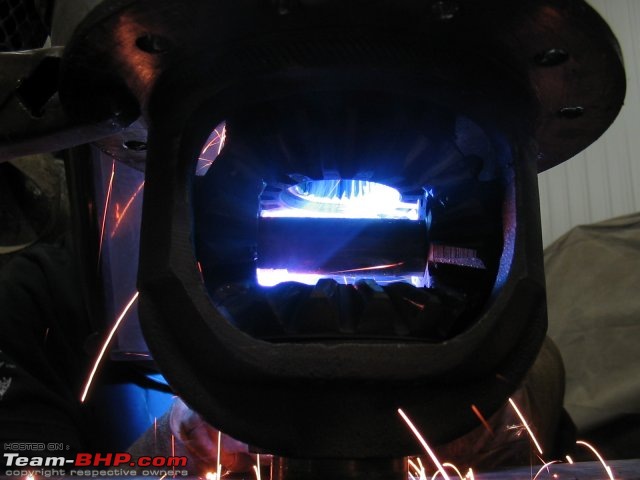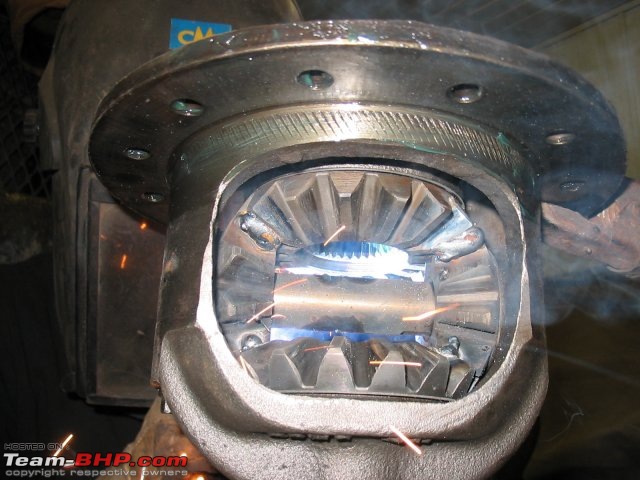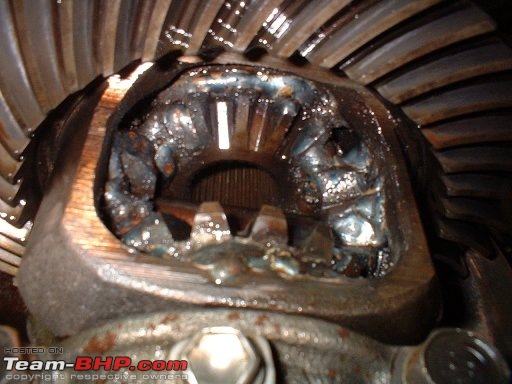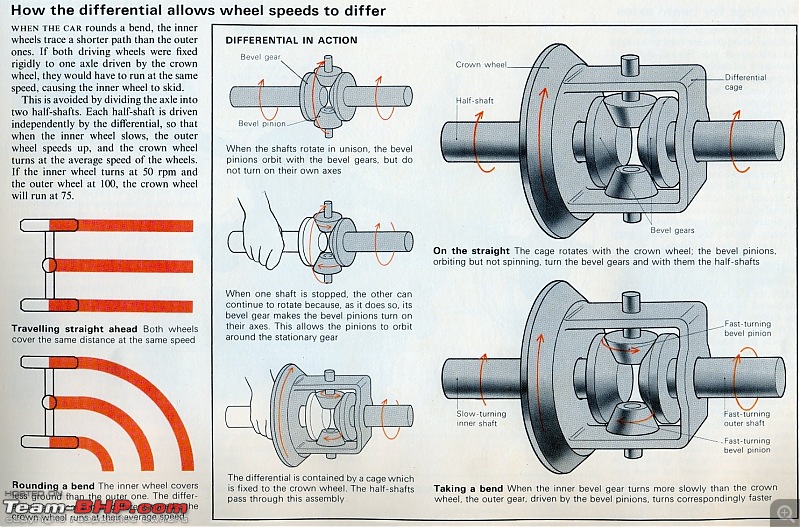Quote:
Originally Posted by tsk1979  You are comparing apples to oranges! |
Actually i was thinking more like just 2 different types/varieties of apples - since i drew a parallel between a auto-locker and welded diff.
Quote:
Originally Posted by Samurai  No, not really. There is a difference between the juggad improvements we generally do in our Jeeps vs wacky stuff like this. |
Quote:
|
I think Sudarshan already covered the pros and cons. This stuff really belongs in the weird and wacky mods threads.
|
No, I honestly dont think so... badly executed it may be, but finding a solution to a problem in a less cheaper (BUT totally wrongly engineered way) is not... Still I dont see a direct answer what is different from a auto-locker Vs welding a diff.
Quote:
Originally Posted by ex670c  Hi Santosh,
The problem with welding diffs are
1) The Spider Gear Set (Differential Carrier Pinions & Pinion Shafts) are not designed to take the amount of torque when the diff is welded, hence they crack.
2) Once the spider gears are welded they cause the carrier assy to expand & contract (case deflection) due to the engage-disengage like action caused by the welded spider gears.
This inevitably cause the carrier to crack.
This problem is prevalent in all forms of Differential Locks, excluding the Auto-Locker type mechanism, where there is a unlock mechanism (automatic) but still causes the carrier assy to wear out or the locker mechanism to wear out.
A simpler solution is a SPOOL, where the Crown Gear is bolted to a spindle which carries both the axles, i.e the Carrier Assy is replaced.
Regards,
Arka |
This is what I was expecting... thanks a lot Arka. Now let me and others learn a bit before 'spool' before asking you to do all the work...
-------------------------------------------
Some more reading stuff on this topic
http://en.wikibooks.org/wiki/Nissan_...n/Differential
Weld locking the stock differential is a popular but controversial modification. Welding a differential is typically done to a drift-use car, and is unfavorable to daily-driving conditions. With the proper knowledge daily driving a welded differential can be a livable experience.
The "welded diff" is done by welding the spider gears together in the factory differential. Special care should be taken to make the most durable welds possible, some have welded thick bolts onto the spider gears to make for a stronger weld. Failure could result in an immobilized diff which would cause an unsafe condition for you, and those around you.
Pros:
- Breaks traction consistently, makes drifting much easier than open diff.
- It's cheap, a welder will charge something near 50$ USD to weld. Replacement differentials can be found used for around 40$ USD.
- It's extremely durable when done properly.
- Little to no maintenance.
- In certain situations, and if driven correctly, you will have more grip in cornering.
Cons:
- Requires a different way of taking corners. Must accelerate through a turn, to the limit of adhesion, taking care not to break the tires loose and cause oversteer.
- Tires make noise at very low speeds (typically parking, or U-turns) as the wheels "fight" each other. The wheels are traveling at the same speed, but along different radii, which causes the inside wheel to shake, hop, and break loose at low speeds. This will increase tire wear in normal use, but if you really care about tire wear over performance, you wouldn't be welding a differential. Let it also be known that most 2-way LSD's exhibit this same characteristic, especially the more aggressive ones.
- Car tends to "push" at low speed.
- Not recommended for inexperienced grip driving. Can be very effective and far more consistent than an open differential, but requires advanced driving techniques.
- If the welds break, they can cause differential lock, and lead to a potential accident.
------------------------------------
(Front diff on a FWD car - never a good idea to weld, but still read on)
http://www.dsmtalk.com/forums/showthread.php?t=204298
5.) A welded differential makes the diver side and passenger side tire fight the asphault when turning, resulting is premature tire wear.
4.) Turning also puts a lot of stress on the CV joints and axles. I have already had to replace both axles. One of them only had 10,000mi on it, the other half shafts mileage was unknown. The new axles (Autozone) are already clicking under hard, slow turns and all right hand turns over 15MPH.
3.) Your turning radius gets WAY worse. You can forget about making those u-turns that you were already having problems making. It jerks and shakes during u-turns anyhow, it makes for a pretty unpleasant ride.
2.) I am pretty sure that the added tension from the welded diff daily driving has also caused my lower ball joints to go out but then again, they could be the factory ones from 1995?
1.) The power steering rack hasn't handled the abuse very well. I recently started hearing a clunking noise when I would go over bumps. As the clunking got louder, I started to notice a little wheel hop while driving on wet roads. The power steering rack has got almost 1/2" in it and I can move my tire from side to side
------------------------------------------------------
 (3)
Thanks
(3)
Thanks
 (1)
Thanks
(1)
Thanks
 (3)
Thanks
(3)
Thanks
 (1)
Thanks
(1)
Thanks

 (1)
Thanks
(1)
Thanks


 (2)
Thanks
(2)
Thanks
 (1)
Thanks
(1)
Thanks

 (2)
Thanks
(2)
Thanks












 you have taken this too seriously ,
you have taken this too seriously , 